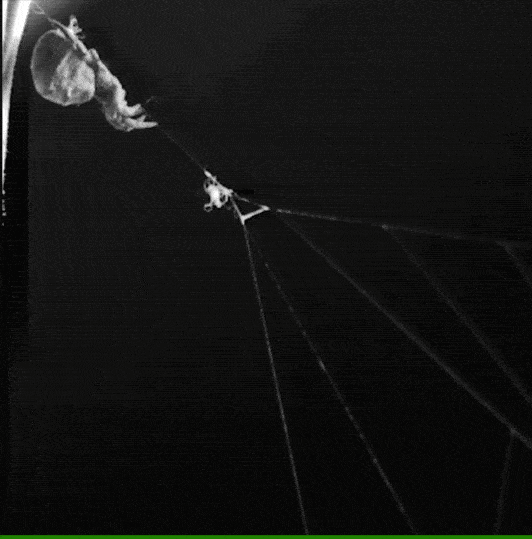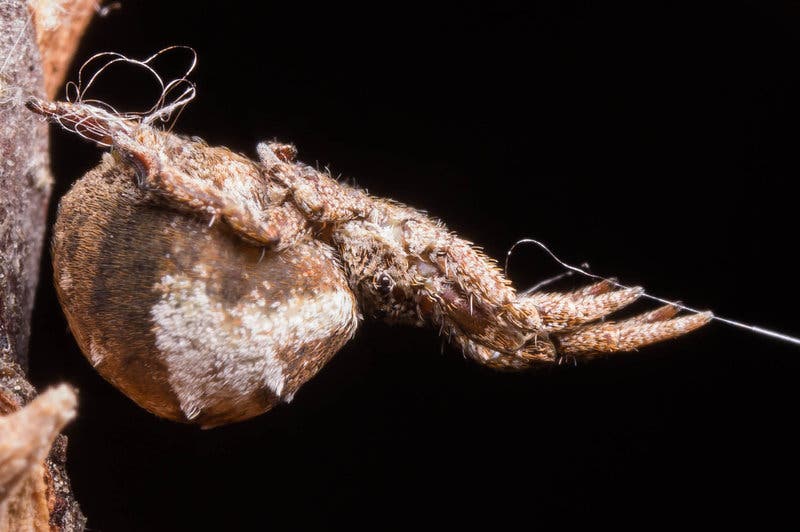A resourceful type of spider uses its own web like a slingshot to catapult forward and trap prey. Before the discovery of these creatures, only humans were known to use tools in order to amplify the energy of their movements.
Most spiders build a familiar-looking spiral web, waiting for unsuspecting prey to become entangled. But while these webs are static, the triangle-weaver spider (Hyptiotes cavatus) crafts a stretchy triangle-shaped web that acts as a slingshot or bow and arrow.
This is how it works: the spider makes a single thread connecting a wall to the triangle web. The arachnid moves backwards along this thread to tighten the web, storing energy across its entire length. When the time is right, such as when prey is close to the triangle web, the spider lets go of its grip. The spider can remain in tension for hours at a time if needed. The released tension recoils the spider and its triangle web at high velocity, in the same way a rubber band would fly off once you pull it back. 
Credit: Sarah Han.This behavior, known as “power amplification”, has been documented for some time in triangle web spiders, but it was only recently that researchers at the University of Akron have quantified the forces involved. To study the animals, researchers collected triangle-weaver spiders from the university’s campus in Ohio and inserted them in enclosed terrariums. Flies were regularly released into the enclosure so the spiders might feed, while high-speed cameras recorded even the slightest movement of the arachnids.
Using sophisticated motion tracking software, the researchers recorded position data that allowed them to decode the spider’s precise and ultra-fast movements. In fact, the spider slingshots so fast, it travels with the equivalent velocity of 400 body lengths per second, according to the researchers. The maximum recorded acceleration was 773 meters per second squared, which is equivalent to a dizzying 79 g’s. Fighter pilots can’t pull more than 9 g’s without passing out.
Many animals use elastic-energy storage and recoil to produce extremely rapid motions. Examples include the jumping motion of fleas and frogs or the deadly punch of the mantis shrimp. However, the triangle-weaver’s impressive web shooting is the only known case of a nonhuman utilizing an external device for power amplification. In the future, researchers want to investigate how the spider manages to accelerate to fast without squashing itself.
“This finding reveals an underappreciated function of spider silk and expands our understanding of how power amplification is used in natural systems, showing remarkable convergence with human-made power-amplifying tools,” the authors wrote in the Proceedings of the National Academy of Sciences.










